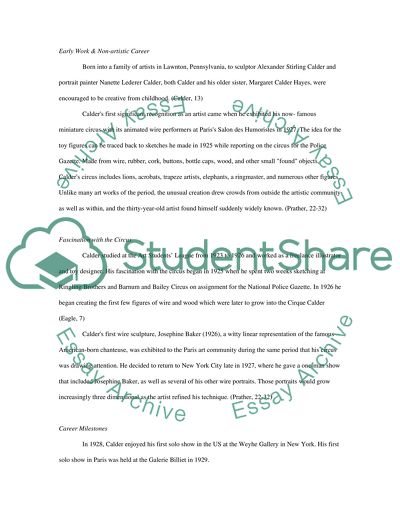Cite this document
(“Alexander Calder Essay Example | Topics and Well Written Essays - 1500 words”, n.d.)
Retrieved from https://studentshare.org/miscellaneous/1507009-alexander-calder
Retrieved from https://studentshare.org/miscellaneous/1507009-alexander-calder
(Alexander Calder Essay Example | Topics and Well Written Essays - 1500 Words)
https://studentshare.org/miscellaneous/1507009-alexander-calder.
https://studentshare.org/miscellaneous/1507009-alexander-calder.
“Alexander Calder Essay Example | Topics and Well Written Essays - 1500 Words”, n.d. https://studentshare.org/miscellaneous/1507009-alexander-calder.


